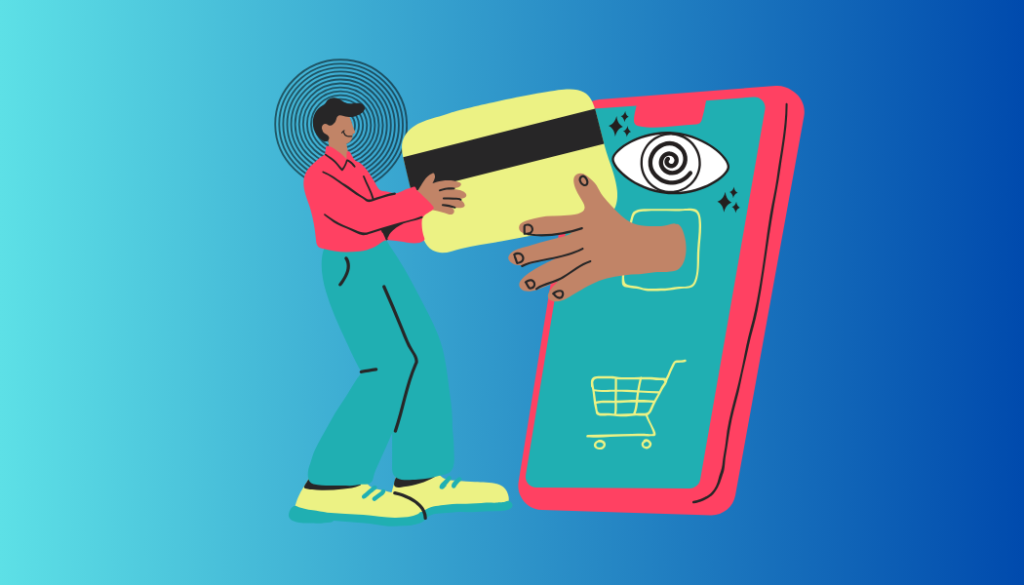The world of online shopping is like a vast, bustling marketplace, teeming with opportunities and temptations at every turn. We’ve all felt the tug of those flashy ads, enticing deals, and promises of exclusive offers. But have you ever stopped to wonder just how those shopping sites manage to get you to spend more than you intended? Join us as we delve into the secrets behind the curtain and uncover the tactics used by online retailers to boost their sales.

Why Do We Overspend?
Let’s kick things off with a peek into the human psyche. Ever found yourself mindlessly adding items to your cart, even when your rational brain is screaming “stop”? You’re not alone. Turns out, there’s a whole array of psychological triggers at play when it comes to spending money.
The Psychology of Overspending and Impulse Buying
Emotions are like puppet masters, pulling our strings and nudging us towards that checkout button. Whether it’s a moment of joy, a bout of boredom, or even a pang of sadness, our emotions can lead us straight into the arms of retail therapy. And then there’s dopamine, the ultimate pleasure-inducing neurotransmitter. It’s like a little reward system in our brains, lighting up every time we make a purchase and keeping us coming back for more.
But it’s not just our emotions calling the shots. Social influences also play a big role. We humans are social creatures, after all, and we have an innate desire to fit in and belong. So when everyone else is splurging on fancy gadgets or designer duds, it’s hard not to feel the pull to join in the fun.
And let’s not forget about the sneaky tactics retailers use to mess with our heads. From clever pricing strategies to the illusion of scarcity, they know all the tricks to make us loosen our purse strings.
How Shopping Sites Influence Our Buying Decisions
Now that we’ve peeled back the layers of our own psychology, let’s turn our attention to the digital realm. Online shopping sites are like virtual playgrounds, where every click and scroll is carefully choreographed to lead you towards that “buy now” button.
The Art of Persuasion: Common Tactics Used by Shopping Sites
- Limited Stock Alerts: Ever seen a message proclaiming “Only 2 left!” next to an item you’re eyeing? That’s not just a coincidence. It’s a tactic designed to trigger your fear of missing out and push you into making a snap decision.
- Countdown Timers: Nothing gets the heart racing like a ticking clock. Countdown timers create a sense of urgency, making you feel like you need to act fast before time runs out.
- Real-Time Purchase Data: Seeing that other people are snapping up the same item can give you a case of FOMO (fear of missing out). It’s like a virtual version of keeping up with the Joneses.
- Volume Discounts: Who doesn’t love a good deal? Retailers know that offering savings on bulk purchases can be a powerful motivator to spend more.
- Cross-Sells and Upsells: You came for one thing, but you might just leave with a whole lot more. That’s the magic of cross-selling and upselling, where retailers tempt you with complementary products or upgrades at checkout.
And the list goes on. From push notifications to flash sales, online retailers have a whole arsenal of tricks up their sleeves to keep you coming back for more.
The Dangers of “Dark Patterns” in Online Shopping
But not all tactics are created equal. Some cross the line from clever marketing into downright deception. Enter the world of dark patterns—sneaky design techniques that manipulate users into actions they might not otherwise take.
What Are Dark Patterns?
Imagine trying to navigate a maze with invisible walls and hidden traps. That’s what it’s like encountering dark patterns online. From misleading countdown timers to checkbox treachery, these tactics are designed to trick you into doing things you didn’t intend.
Protecting Yourself from Dark Patterns: 5 Tips to Stay Safe
In a world where every click is a potential pitfall, how can you protect yourself from falling prey to dark patterns? Here are a few strategies to keep in your back pocket:
- Stay Informed: Knowledge is power. Arm yourself with awareness about common dark patterns used by online retailers.
- Read the Fine Print: It may not be the most thrilling read, but taking the time to read terms and conditions can save you from unwittingly agreeing to unfair practices.
- Check Your Privacy Settings: Keep tabs on who has access to your data and what they’re doing with it. Regularly review your privacy settings to ensure you’re only sharing what you’re comfortable with.
- Use Ad Blockers and Privacy Extensions: Protect yourself from manipulative ads and pop-ups with the help of ad blockers and privacy-focused browser extensions.
- Trust Your Gut: If something seems too good to be true, it probably is. Take a step back and question the legitimacy of any urgent offers or deals.
And remember, knowledge is your best defense against dark patterns. Stay vigilant, stay informed, and keep those online shopping sprees in check.
Code PD Proxy Source
If you’re looking for information about PD proxy sources, it’s essential to ensure your online privacy and security. PD proxy sources typically involve accessing proxy servers, which can present risks if not adequately protected. By using a reliable VPN service like ForestVPN, you can encrypt your internet connection and protect your data from potential threats. ForestVPN offers secure and anonymous browsing, ensuring that your online activities remain private and protected. With ForestVPN, you can browse the web safely and access geo-restricted content without worrying about your privacy being compromised. Visit ForestVPN today to safeguard your online experience.


